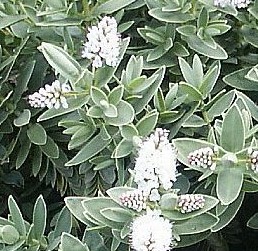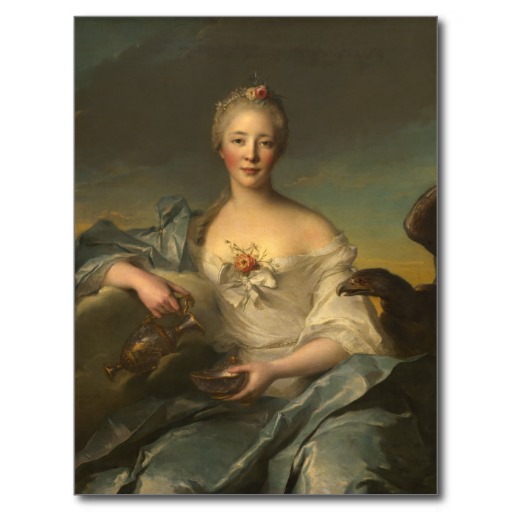Hebe (HEE bee) Greek hebe meaning youth; named for the Greek goddess of youth
 Hebe is the name of a genus in the plantain family (Plantaginaceae) and are closely related to Veronica. The genus consists of about 90 species and is native to New Zealand, Rapa in French Polynesia, the Falkland Islands and South America. Hebe are evergreen and range in size from dwarf shrubs two to three feet tall to small trees about twenty feet tall. They have small white, pink, crimson, blue, lavender or purple flowers clustered in a spike-like inflorescence that attracts butterflies. Plants thrive in full sun and loose well-drained soil, but tolerate some shade. Their tolerance to salt spray makes them a good choice for coastal gardens.
Hebe is the name of a genus in the plantain family (Plantaginaceae) and are closely related to Veronica. The genus consists of about 90 species and is native to New Zealand, Rapa in French Polynesia, the Falkland Islands and South America. Hebe are evergreen and range in size from dwarf shrubs two to three feet tall to small trees about twenty feet tall. They have small white, pink, crimson, blue, lavender or purple flowers clustered in a spike-like inflorescence that attracts butterflies. Plants thrive in full sun and loose well-drained soil, but tolerate some shade. Their tolerance to salt spray makes them a good choice for coastal gardens.

The Greek goddess Hebe was the daughter of Jupiter and Here, and cupbearer to the gods on Mt. Olympus. In addition, Hera was patron goddess of young brides and an attendant of the goddess Aphrodite. She married Heracles when he entered Mt. Olympus and had two sons. Earliest depictions in Greek art show her as the bride of Heracles or the cup bearer holding a pitcher . From about 1750 to 1880 wealthy women in Europe often had their portraits painted as Hebe. The inclusion of flowers in the hair, a white flowing dress, a cup, and an eagle (symbol of Zeus) identified the sitter as Hebe.